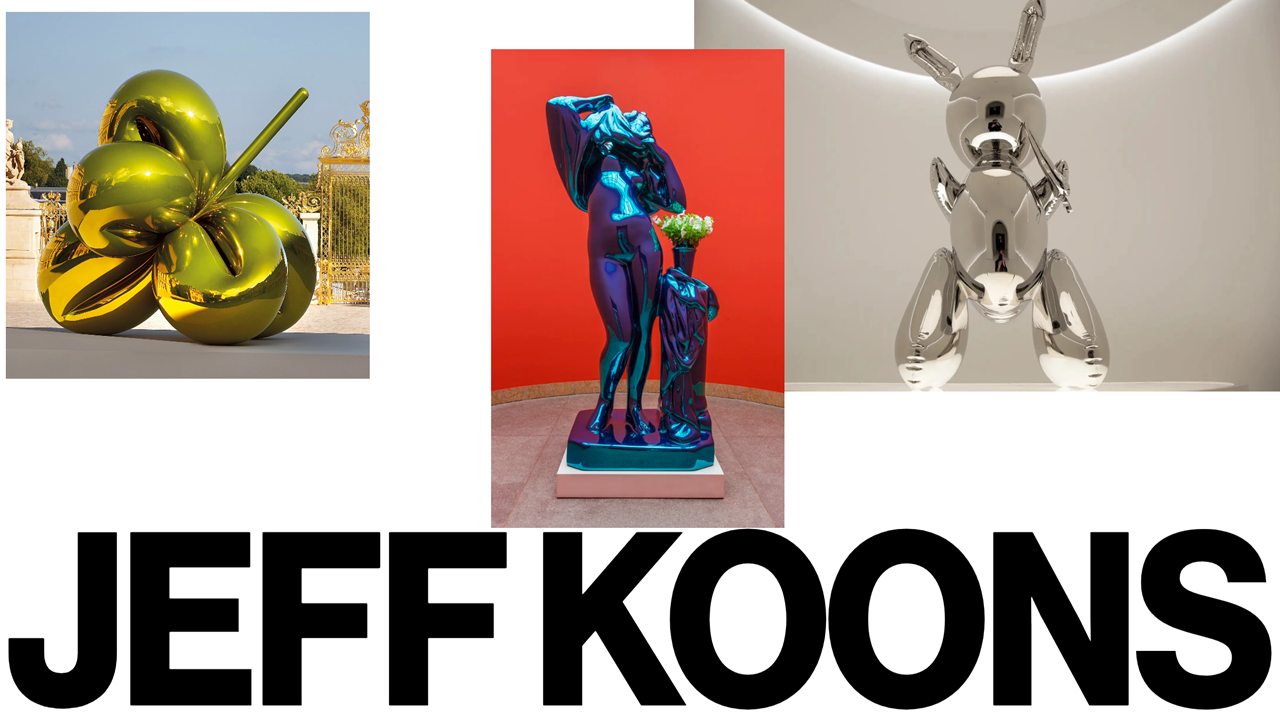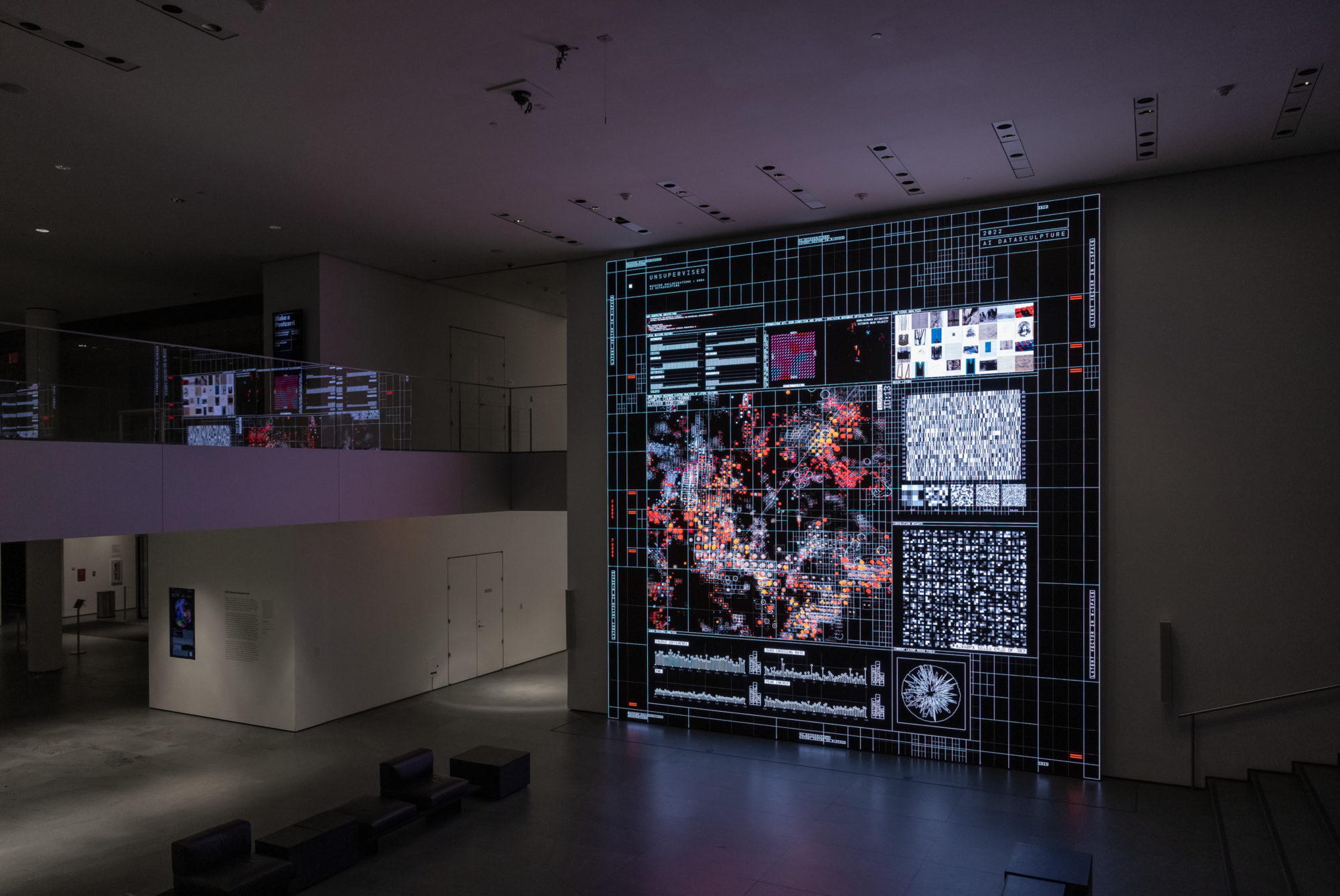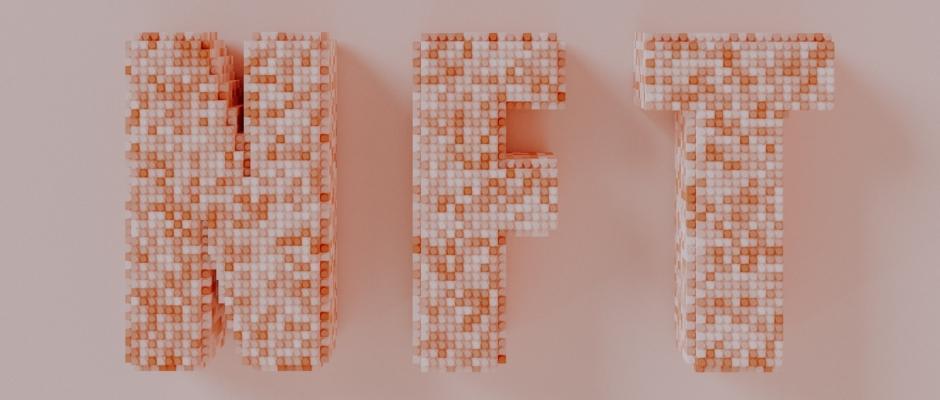Many art institutions are embracing art with new technologies. Through such efforts, we can further advance contemporary art discourse using new technologies and thus explore the evolving landscape of contemporary art while discovering emerging artists of the new generation.
 Installation view of ‘Refik Anadol Unsupervised,’ The Museum of Modern Art, New York, November 19, 2022 – April 15, 2023. © 2023 The Museum of Modern Art. Photo Robert Gerhardt.
Installation view of ‘Refik Anadol Unsupervised,’ The Museum of Modern Art, New York, November 19, 2022 – April 15, 2023. © 2023 The Museum of Modern Art. Photo Robert Gerhardt.Let’s place the terms “science” and “art” side by side. Science and art may initially appear to be separate fields with no apparent connection. Generally, we associate science with the realm of reason and art with the realm of emotion. However, we are aware that these two fields share a close relationship.
Just as everything in our society is interconnected, science and art have a dynamic relationship of mutual influence. The advancement of science and technology brings changes to our way of life, alters the way we perceive the world, and, in turn, affects various fields, including art.
The progress of science and technology inspires artistic innovation. The Impressionist painters, who aspired to capture light, serve as a prime example. Impressionist paintings, which depicted instantaneous light effects without precise details, were entirely innovative and unprecedented. However, this new approach did not spontaneously emerge without any reason.
 Claude Monet, 'Haystacks, (sunset),' 1890–1891, Museum of Fine Arts, Boston.
Claude Monet, 'Haystacks, (sunset),' 1890–1891, Museum of Fine Arts, Boston.The inspiration for Impressionist painters to capture fleeting light came from the scientific community’s discovery that color originates from light. Isaac Newton was the first to discover the relationship between light and color. In an experiment in 1665, Newton observed sunlight passing through a prism and dispersing into a spectrum of colors. This discovery also influenced the renowned German writer and philosopher Johann Wolfgang von Goethe, leading to advancements in the study of color theory. The concept of color later influenced not only Impressionist painters but also phenomenologists.
Whenever new technologies emerge, they bring forth new art movements and master artists who reshape the art world. For instance, with the advancement of photography, Cézanne was able to devise the technique of painting from multiple perspectives, giving rise to Cubism, a movement that represented subjects from a variety of viewpoints, thereby expanding upon Cézanne’s innovative approach.
Art history, which used to flow with one or two predominant movements in each period, began to witness the sudden emergence of various artistic movements as the modern era began. It was a time characterized by the rapid development of new technologies in multiple directions that fostered the emergence of diverse ideas, serving as a catalyst for an array of thoughts and phenomena within the art world. In recent times, this trend has been accelerating at an increasingly rapid rate.
 Image by Steve Johnson on Unsplash.
Image by Steve Johnson on Unsplash.
The advent of the internet has spurred the development of multiculturalism. The emergence of smartphones has made us accustomed to experiencing artworks presented on screens, rivaling the experience of viewing a physical artwork hanging on a white wall. The boundaries between physical reality and the virtual space on digital screens are becoming increasingly blurred. With the introduction of blockchain technology, non-fungible tokens (NFTs) have emerged as a new form of digital art.
The most prominent technology nowadays is artificial intelligence (AI). We have now entered an era in which AI not only assists in tasks but also engages in artistry. AI applications such as Deep Dream, DALL-E, and Midjourney can even create their own artwork. With the emergence of such AI capabilities, some speculate that machines might eventually replace artists in certain aspects of creativity, substituting for humans in the artistic realm.
In 2018, the Paris-based art collective Obvious constructed Edmond de Belamy, a generative adversarial network portrait painting. This artwork was auctioned at Christie’s New York in 2019 with an estimated value of $10,000. Following intense competition, it was eventually sold for $432,500 with a premium.
 Image by Google DeepMind on Unsplash.
Image by Google DeepMind on Unsplash.How will contemporary art evolve in this rapidly changing technological landscape, and what new forms will emerge? The international art world, including art museums and the art market, actively engages in various experiments and endeavors to shape the discourse surrounding these changes.
The Museum of Modern Art (MoMA) in New York is currently exhibiting Unsupervised by artist Refik Anadol, who is considered a first-generation AI artist. Unsupervised showcases dynamically evolving real-time data paintings that utilize AI, collecting, analyzing, and reinterpreting image data from the museum’s collection spanning more than 200 years, as well as real-time weather data, visitor movements, and sounds.
MoMA’s engagement with AI extends beyond showcasing AI-based artwork. In an effort to foster discourse around AI technology, MoMA not only introduces the artistic world of Anadol but also features videos of MoMA curators discussing the relationship between AI technology and art and publishes articles analyzing the relevance of AI in contemporary art on their website.
In an interview with The New York Times, MoMA curator Michelle Kuo, who worked on the project, mentioned that “Refik is bending data — which we normally associate with rational systems — into a realm of surrealism and irrationality. His interpretation of MoMA’s data set is essentially a transformation of the history of modern art.”
 Installation view of ‘Refik Anadol: Unsupervised,’ The Museum of Modern Art, New York, November 19, 2022 – April 15, 2023. © 2023 The Museum of Modern Art. Photo Robert Gerhardt.
Installation view of ‘Refik Anadol: Unsupervised,’ The Museum of Modern Art, New York, November 19, 2022 – April 15, 2023. © 2023 The Museum of Modern Art. Photo Robert Gerhardt.South Korea is a country that houses major corporations such as Samsung, Hyundai, and LG, earning the title of a technological powerhouse. Through various programs, these companies support projects that promote the convergence of art and science.
Additionally, art institutions such as the Nam June Paik Art Center, Art Center Nabi, the recently opened Ulsan Art Museum, and the Gwangju Media Art Platform are prominent in showcasing media art, emphasizing the intersection of new technology and art.
It is essential to reflect on the activities of the domestic contemporary art scene in utilizing new technologies to build discourse surrounding contemporary art. Many art institutions and organizations are incorporating digital platforms and technology to expand the reach and accessibility of art, which can foster the development of contemporary art discourse through new technological advancements. This exploration will enable us to navigate the landscape of contemporary art, evolving alongside a new generation of artists and researchers.






























